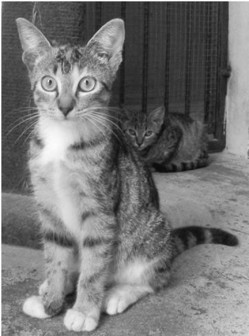Over the last few weeks, we have been discussing various aspects of wound management. Let’s put some of these salient points in a telegram form:
Assess the overall stability of the wounded animal. This is important. How often have I not seen clients exhibiting extreme panic over a bit of bleeding, while overlooking (sometimes hidden) more life-threatening lesions/damage elsewhere in/on the animal.
Haemorrhaging (active bleeding) must be stopped, or at least controlled by direct pressure (see column of March 27).
 The wound must be protected from further contamination or hurt.
The wound must be protected from further contamination or hurt.
Antibiotics should be used in all cases of punctured wounds, where the dirt and debris (bacteria) have entered deeply into the animal’s muscle/body.
Administer painkillers (aspirin, paracetamol, acetaminophen, etc), if and when necessary.

Now that we have that out of the way, let’s look at some specific treatments which you can begin at home.
Washing the wound
Irrigation of the wound will get rid of visible and invisible particles of dirt and debris. It also reduces the amount of germs that would have accumulated on the wound. This alone will help in the healing process.
The solution that you will use should be non-toxic. For example, you will not wash out a wound with Triatox or Supona or Malathion, or with an insecticidal soap (I have encountered all such incorrect acts by panicky owners over many, many years of practice). On the other hand, one can lavage (wash out) a wound with any gentle antiseptic (eg, Dettol, Savlon) without fear of poisoning the animal or introducing more pain. Actually, just plain water (to which could be added a few drops of gentle-to-the-hands liquid dish-washing soap) would suffice – except that water (especially ours laden with rust and salts) could burn the open wound even more. Similarly, one can use a weak common salt solution (it is not antiseptic, but it also is not toxic to the healing tissue).
Many people use the ‘blue’ spray on open wounds to prevent maggots (hatching from eggs of the screwworm fly) from infecting the wound. I would advise strongly against such intervention. The screwworm spray is not tissue friendly and compromises the healing process.
Surgical scrub agents should not be used, because the detergent component is damaging to the tissue. There is a solution on the market that contains a chemical called Chlorhexidine which is good against a lot of types of bacteria, and it does not create any great tissue inflammation. But one should be careful not to use too strong a solution of Chlorhexidine, because that can also be poisonous to the tissue which is in the process of healing.
Finally, one can use Povidone-Iodine (one per cent) as an effective antiseptic wash. The problem with this solution is that its germ-killing activity soon comes to an end (it does not have a long residual strength against germs).
How to apply the wash
I always advise that one could fill a syringe with the antiseptic solution and pressure squirt the latter via an 18-guage injection needle onto the wound (not into the muscle). Squirting liquid antibiotic suspensions onto a wound (in other words, using liquid antibiotics as a lavage fluid) has not been convincingly shown to be effective.
We’ll continue this theme next week.
Please implement disease preventative measures (vaccinations, routine dewormings, monthly anti-heartworm medication, etc) and adopt-a-pet from the GSPCA’s Animal Clinic and Shelter at Robb Street and Orange Walk, if you have the wherewithal to care well for the animals. Do not stray your unwanted pets, take them to the GSPCA’s Clinic and Shelter instead. If you do not wish your pet to have puppies or kittens, you may exploit the GSPCA’s free spay and neutering programme. If you see anyone being cruel to an animal, or if you need any technical information, please get in touch with the Clinic and Shelter by calling 226-4237.





